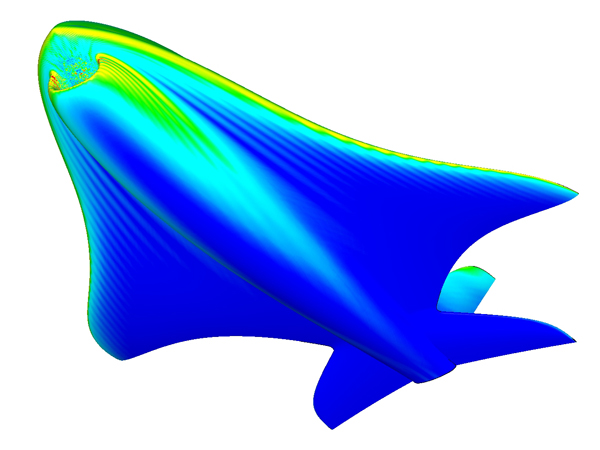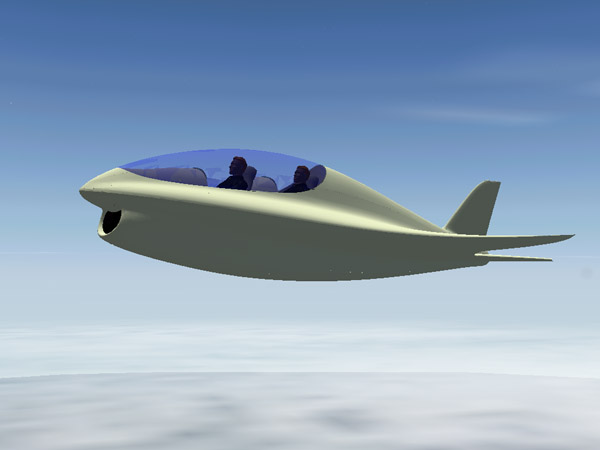March 2010
For studying the scattering of electromagnetic waves by this aircraft, various configurations have been modeled at the Fraunhofer Institute for High Frequency Physics and Radar Techniques (Fraunhofer FHR) in Wachtberg, Germany. Two different methods have been used in these studies, a so-called numerically exact or full-wave approach based on the boundary integral (BI) method with the Multilevel Fast Multipole Method (MLFMM) and a ray tracing algorithm based on Shooting-and-Bouncing-Rays (SBR). All simulations have been performed in the X-Band, resulting in a relative object length over 200 wavelengths.

Surface Current Density Simulation of SmartFish
The results of the ray tracing simulations are mainly radar cross sections (RCS) depending on the angle of incidence, which describe the scattering properties of the whole structure. However, these results are kept confidential. Using the BI-MLFMM method, surface current densities can be computed, showing which parts of the structure provide the most relevant contributions to the scattered fields. The calculations showed very promising results, even on a SmartFish that has been not optimized for low RCS.
If you are interested in similar calculations for your project:
Dr. Frank Weinmann
Fraunhofer FHR, Dept. AEM
+49 228 9435-223
frank.weinmann@fhr.fraunhofer.de
http://www.fhr.fraunhofer.de

Screenshot of SmartFish in X-Plane 9
We are in the process of modeling SmartFish using the X-Plane flight simulator which works by using first principles of aerodynamics and physics. Since the airplane represents advances in design concepts, it remains to be seen if the simulator produces an adequate representation. Once we have a good model, it will be released to potential customers so that they can experience SmartFish flight on their personal computers.
